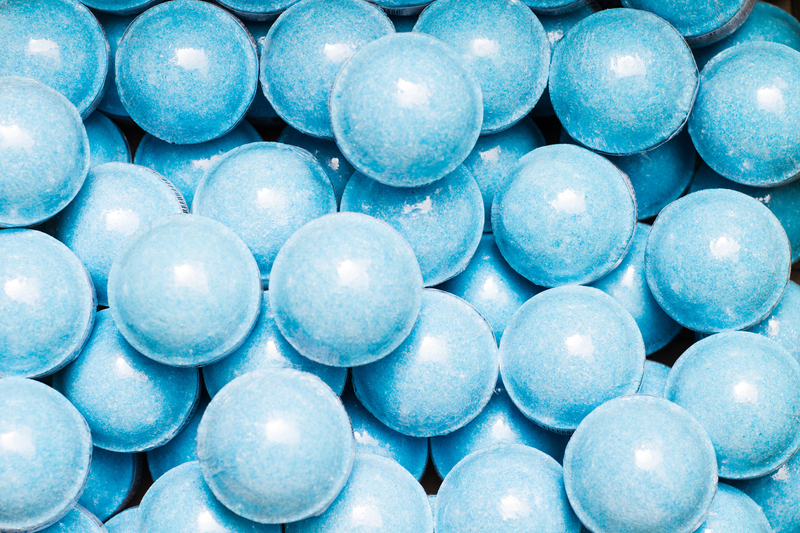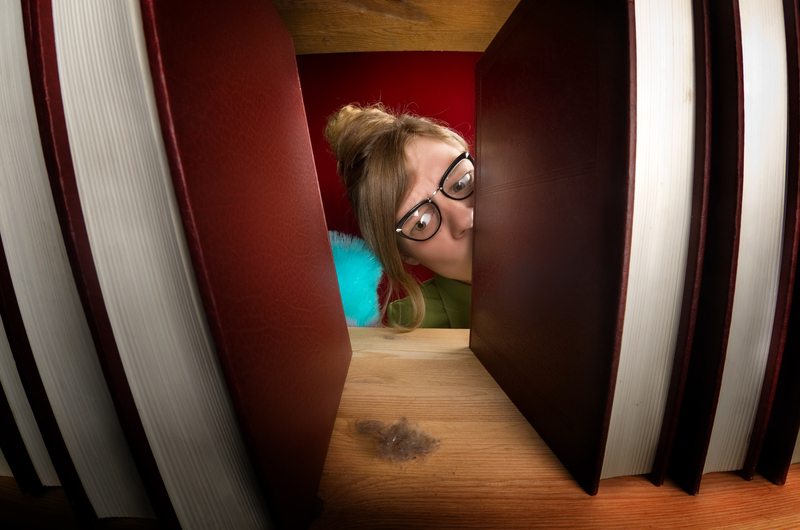Unveil the Secret to Spotless Window Sills Without Mould
Posted on 02/07/2025
Unveil the Secret to Spotless Window Sills Without Mould
Are your window sills developing stubborn stains or that dreaded mould? Maintaining pristine, mould-free window sills might seem like a never-ending chore, but with the right techniques, you can easily enjoy a spotless, fresh-looking home all year round. In this comprehensive guide, we uncover the secrets to keeping window sills sparkling and preventing mould before it even starts. Read on to discover effective methods, smart prevention tips, and expert solutions for spotless window sills without mould.

Why Is Mould a Problem on Window Sills?
Mould spores are everywhere and thrive particularly well on window sills thanks to a combination of moisture, organic matter, and poor ventilation. Left unresolved, mould is not only unsightly, but it can also damage paintwork, wood, and even pose health risks such as allergies and respiratory problems.
- Damage to window frames and paintwork: Frequent exposure to moisture and mould can weaken materials, leading to costly repairs.
- Health concerns: Mould spores can exacerbate asthma, trigger allergies, and cause other respiratory issues.
- Worsened aesthetics: Black spots, stains, and greenish growths diminish the beauty of your home interiors.
The Science Behind Mould On Window Sills
To achieve spotless window sills without any mould, it's important to understand what causes mould to thrive in these areas. Mould growth is encouraged by:
- Condensation: Windows often experience condensation, especially during seasonal temperature fluctuations, providing a moist environment for mould.
- Poor airflow: Stagnant air around window frames increases humidity, facilitating mould growth.
- Dirt and dust: Organic debris accumulating on window sills acts as a food source for mould spores.
Knowing and addressing these root causes is crucial in your quest for consistently clean and mould-free window sills.
Essential Tools and Supplies for Spotless, Mould-Free Window Sills
Before diving into cleaning, make sure you have the right supplies. Here's a checklist for a successful deep clean:
- Microfiber cloths or disposable paper towels
- Soft-bristled brush (old toothbrushes work well!)
- Spray bottle with water
- Mild detergent or gentle all-purpose cleaner
- White vinegar or baking soda (natural mould-fighters)
- Rubber gloves
- Protective mask (to avoid inhaling spores if mould is visible)
Having these items ready will save time, enhance your safety, and deliver the best results for your window sills!
Step-by-Step Guide: How to Clean Window Sills and Prevent Mould
Step 1: Remove Loose Dirt and Debris
Begin with dry cleaning of your window sills. Use a vacuum with a soft brush attachment or a dry microfiber cloth. Remove dust, cobwebs, dead insects, and any visible debris. This eliminates food sources for mould and improves the effectiveness of subsequent cleaning.
Step 2: Apply a Gentle Cleaning Solution
Mix a few drops of mild detergent in warm water, or use a 1:1 solution of white vinegar and water for a natural approach. Spray the solution onto the sill and allow it to sit for several minutes. This loosens grime and breaks down any mould spores on the surface.
Step 3: Scrub Stains and Mould Spots
Using your soft-bristled brush or an old toothbrush, gently scrub any stains, especially black or green mould spots. For tougher stains, sprinkle baking soda over the affected area before scrubbing for enhanced cleaning power.
Step 4: Wipe and Dry Thoroughly
After scrubbing, wipe the window sill with a clean damp cloth to remove residue, then dry completely with another cloth or paper towel. Ensuring the area is bone dry is crucial to prevent future mould growth.
Step 5: Disinfect (If Needed)
If the mould problem was severe, use a diluted bleach solution (1 part bleach to 10 parts water) to disinfect the area, followed by thorough rinsing and drying. Note: Bleach is effective against mould, but should only be used in well-ventilated areas and never mixed with vinegar or other cleaners.
Step 6: Prevent Future Mould Growth
Here's where the real secret to ever-spotless, mould-free window sills lies--prevention. Incorporate these tips into your regular cleaning routine:
- Keep sills dry. Wipe any condensation or water spills immediately to remove moisture.
- Improve airflow. Open windows regularly for ventilation or use a fan to reduce humidity near windows.
- Use dehumidifiers. Especially in high-humidity seasons, keep indoor humidity below 55%.
- Seal window gaps. Ensure windows close tightly and repair any leaks immediately.
- Dust window sills weekly. Regular dusting removes organic matter that could attract mould.
Spotless Window Sills: Best Natural Remedies for Mould Prevention
Harsh chemicals aren't always necessary for clean and mould-free window sills. Here are some eco-friendly remedies proven to work:
- White Vinegar: A natural antimicrobial agent. Spray undiluted on the sill, allow it to sit for 30-60 minutes, then wipe dry.
- Baking Soda: Absorbs moisture and deodorises. Sprinkle on a damp cloth and wipe surfaces to prevent odours and slow mould regrowth.
- Tea Tree Oil: Mix a teaspoon of tea tree oil with a cup of water in a spray bottle; spray on sills for ongoing protection.
- Lemon Juice: Its acidic property helps break down stains and inhibits mould growth. Rub directly onto affected areas, allow to sit, then rinse.
These natural solutions are safe for households with children and pets, and also help in maintaining an inviting, fresh scent around your windows!
Frequently Asked Questions: Spotless and Mould-Free Window Sills
How often should I clean my window sills?
For spotless window sills without mould, dust weekly and perform a deep clean at least once a month. In humid climates, increase frequency as needed.
What should I do if mould keeps returning?
Persistent mould usually indicates an underlying humidity or water ingress issue. Address leaks, improve ventilation, and consider using a dehumidifier. If the problem continues, consult a professional to inspect insulation and window seals.
Can vinegar or other natural remedies remove old mould stains?
White vinegar can eliminate active mould, but for old, stubborn stains, you may need to pair it with baking soda, or use a gentle bleach solution (only on non-wood surfaces). Always test cleaning agents on a small area first!
Is mould on window sills dangerous?
Some types of mould, especially black mould (Stachybotrys chartarum), can be potent allergens or even toxic. If you notice persistent, dark-coloured moulds on your sills, take action promptly and seek professional remediation if the problem is extensive.
Maintenance Tips: How to Guarantee Spotless Window Sills All Year Round
- Inspect window seals and caulking annually. Any cracks or gaps will let in moisture, creating a prime environment for mould.
- Keep blinds, curtains, and surrounding walls clean. These can harbour dust and spores that settle onto your window sills.
- Introduce houseplants cautiously. While they're great for air quality, overwatering plants near windows can increase surrounding humidity and raise the risk of mould.
- Monitor indoor humidity levels. Use a hygrometer to ensure relative humidity stays within the recommended range (30-50%).
- Educate household members. Everyone should know to wipe up spills, never ignore condensation, and report drafty or leaky windows for early intervention.

When to Call In the Pros for Mould on Window Sills
If you've tried every trick for having spotless window sills without mould and the problem worsens or spreads to other parts of your home, it's time to consult professionals. Mould remediation specialists can:
- Identify the species of mould
- Safely remove persistent or hazardous moulds
- Offer insulation and sealing advice to prevent recurring issues
Professional intervention guarantees safety and long-term peace of mind, especially in homes with vulnerable individuals.
Conclusion: Your Path to Spotless, Mould-Free Window Sills
Achieving spotless window sills without mould is simple with a mix of routine cleaning, natural prevention methods, and prompt action at the first sign of trouble. Remember to:
- Clean and dry regularly
- Improve ventilation and monitor for leaks
- Use safe, effective cleaning agents
- Act quickly to address mould before it spreads
By incorporating these secrets and techniques, your window sills can remain spotlessly clean and healthy--transforming your living space into a brighter, fresher, and more inviting environment. Don't let mould win--start your journey to pristine, mould-free window sills today!








